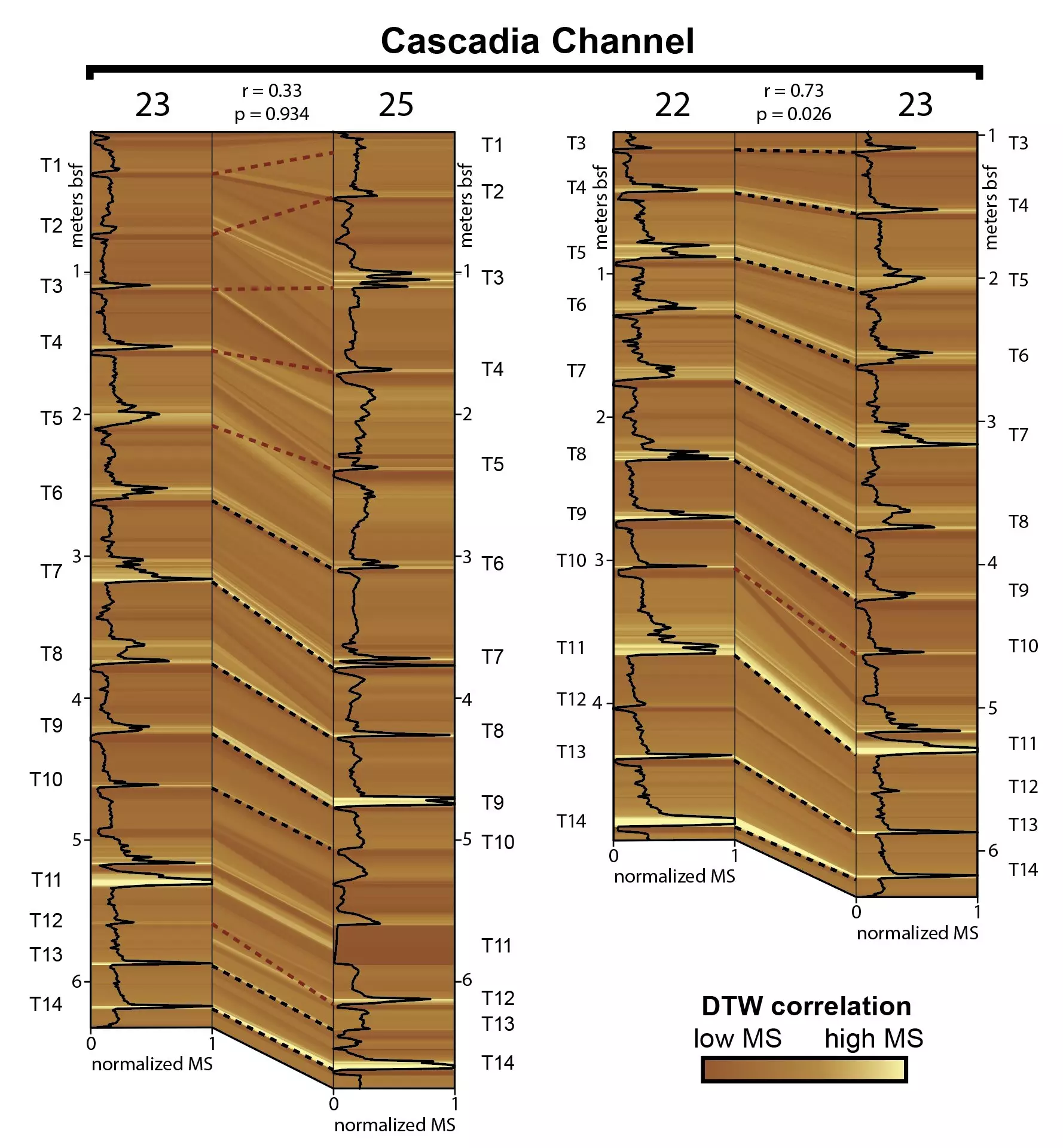The Cascadia subduction zone, a tectonic boundary off the coast of the Pacific Northwest, has long been recognized for its propensity to generate catastrophic seismic events. These earthquakes not only reshape the coastline but also possess the potential to incite tsunamis that travel vast distances, even reaching the shores of Japan. The last major quake in this region occurred in 1700, and while it serves as a poignant reminder of the geological forces at play, scientists warn that it will not be the last. What adds urgency to this scientific inquiry is the fact that the zone now encompasses rapidly growing metropolitan areas inhabited by millions.
Understanding the frequency and timing of future earthquakes has become a focal point for researchers. In particular, the geological record, which includes various indicators of past seismic activity, has been a rich area for study. Among these are turbidites—underwater sediment layers believed to be remnants of ancient seismic events. However, a pivotal study from The University of Texas at Austin casts doubt on the reliability of this sediment-based earthquake record.
Questioning Turbidite Reliability
The research team analyzed turbidite layers from the Cascadia subduction zone, some dating back approximately 12,000 years. Their findings raised significant questions about whether these layers can reliably correlate with historical earthquakes. Utilizing an algorithm designed to quantitatively assess the relationships between turbidite samples, the study revealed unsettling results: in numerous instances, the correlations among these layers appeared to be no better than random chance.
This finding is alarming because turbidites are often associated with seismic activity due to the belief that they are predominantly the result of landslides triggered by earthquakes. However, various natural phenomena—such as storms and floods—can also create similar deposits. This multifaceted causation complicates the task of linking turbidite layers unambiguously to specific seismic events.
As noted by Joan Gomberg, a co-author of the study and geophysicist at the U.S. Geological Survey, the implications of these results necessitate a paradigm shift in how researchers interpret the timelines of past earthquakes. She emphasizes the urgency of further investigations to refine our understanding of these intervals, particularly as the region’s seismic activity poses a real threat to densely populated urban centers.
Despite the challenging implications of the study, the researchers did not dismiss the existing estimates regarding earthquake frequency in the Cascadia subduction zone. Although the consensus remains that major quakes in the region occur approximately every 500 years, it becomes clear that reliance on turbidites alone is insufficient for drawing definitive conclusions. This makes the rationale for incorporating a more comprehensive array of geological data all the more critical.
At the heart of the study is the application of a novel analytical tool known as “dynamic time warping,” a technique traditionally used in fields such as voice recognition and dynamic graphics rendering. This algorithm provides a systematic approach to evaluating the relationships among turbidite layers that may vary in appearance yet share a common origin. By detecting subtle similarities in magnetic properties across samples, researchers hoped to uncover clearer connections between geological layers.
Co-author Zoltán Sylvester, a research professor at the Jackson School of Geosciences, highlighted that applying such a method is groundbreaking in the context of geology, as it enables scientists to go beyond qualitative assessments of sediment. However, it also places a significant burden on researchers to interpret these quantitative results meaningfully.
The study’s findings reflect a broader theme within the geological sciences: the necessity for diligent analysis that transcends reliance on traditional methods. The researchers subjected their algorithm-generated correlations to rigorous scrutiny by comparing them against synthetic data to filter out mere coincidences. The results were illuminating, suggesting that only turbidite layers within close proximity—approximately 15 miles—showed significant correlations, leading to further doubts about the strength of existing connections drawn over larger distances.
The researchers acknowledge that while algorithms and machine learning techniques provide powerful tools, the ultimate responsibility rests with scientists to interpret and integrate these findings into a coherent understanding of seismic history. As disaster preparedness becomes increasingly vital in the face of natural calamities, these insights stress the importance of ongoing research focused on refining our understanding of the geological factors that contribute to earthquake risks.
While the Cascadia subduction zone’s seismic history remains a critical area of study, emerging research challenges established narratives about the past. Understanding when the next significant earthquake will occur may hinge not only on refining the geological record but also on advancing our analytical techniques—an endeavor that promises to improve our preparedness for future seismic events.

